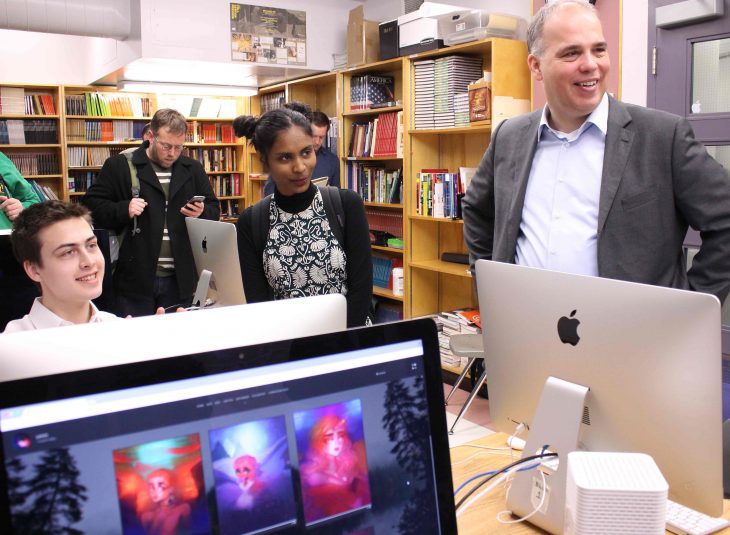
TORONTO – Twenty public schools that risked being left out of the Toronto District School Board’s plans to upgrade broadband connectivity are about to get a leap into the gigabit world thanks to a donation from Rogers Communications.
The cableco said Thursday that it has started a three-year pilot project to bring its Ignite Gigabit Internet service to the schools, which are among 32 now serviced only by Bell Canada’s legacy copper-wire ADSL service. That means all they could hope for was around 18 Mbps – good enough for text research but not for some graphic-intensive projects – and when many users are on line simultaneously.
Meanwhile the rest of the board’s roughly 540 schools are either already getting much faster speeds because they are on a fibre optic network or will be upgraded to new technology in the next 60 weeks. However, these or facilities couldn’t get close to Gigabit service without a helping hand.
That came from Rogers thanks to its adoption of the DOCSIS 3.1 technology, which allows Gigabit speeds over its infrastructure without major rewiring.
“Most of the schools already had the internal wiring,” Dirk Woessner, president of Rogers’ consumer business unit, said in an interview at a Toronto school where the announcement was made. “Some might have needed external drops [on the last metres to the school] and maybe a wire to the primary connection.”
In addition to arranging the connectivity Rogers is also donating the Gigabit routers. Installations will be complete in a few months.
The board relies on two service providers: Cogeco Data Services, which services 325 schools with Gigabit speeds, and Bell Canada, which services 222 schools whose connectivity is being upgraded over the next 12 to 14 months.
Woessner said Rogers was in discussions with the board how to improve Internet access with some facilities, “and then we had the idea: Why don’t we use this great new product we have to collaborate, and on the one side show the technology’s capabilities, and on the other really give back to the community.”
“The partnership is going to have a huge impact on learning outcomes of students in the 20 schools.” – Peter Singh, TDSB
“The partnership is going to have a huge impact on learning outcomes of students in the 20 schools,” Peter Singh, CTO of the Toronto public board, said in an interview. “We consider them global learners. We’re preparing them for the future, and their future isn’t just in Ontario or North America – they could be competing anywhere in the world.” But the tools students need in the classroom, ranging from looking through online libraries, roaming through virtual museums to leveraging Google Classroom, need ever-faster Internet speeds.
“With Rogers high speed Internet we will be able to accomplish this at these sites, so we’re very happy to have this wonderful relationship.”
The project may start to help bridge the digital divide between rural and urban schools, says Rogers. It notes that more than 70% of Ontario schools do not have the recommended minimum bandwidth capacity of 1Mbps per student to support new classroom technologies, and 90% of schools have outdated and inefficient network setups.
Ontario education minister Mitzie Hunter, who was at the Thursday press event, said the province has a three-year plan to bring technology into classrooms. Each board can make its own decision on how to spend the funds. Ministry programs include the Grants for Student Needs (GSN), which provides funding for learning materials required to meet the curriculum, including internet expenses, computers and the associated network costs.
There is over $70 million through the Pupil Foundation Grant for computer technology. Annual funding through special purpose grants such as the Learning Opportunities Grant and the Geographic Circumstances Grant, which can cover the purchase of computer technology. The province also has a $150 million Technology and Learning Fund, which provides money for acquisition of technology and resources such as tablets, laptops, 3D printers and software for classrooms and professional learning for educators.
Photo by Howard Solomon is of Dirk Woessner, president of Rogers Communications consumer business unit, right, with students at demonstration of Gigabit Internet capabilities.



